The Android 5.0 Lollipop Review
by Brandon Chester on December 1, 2014 10:00 AM EST- Posted in
- Smartphones
- Android
- Tablets
- Android 5.0
Google Fit
Google Fit was launched at Google IO, as an answer to other health systems put forth by Apple, Samsung, and other companies. Much like Healthkit and the Health app on iOS, Google Fit is a set of APIs and services which is accompanied by the Fit application on your Android device. With Lollipop on the Nexus 6, Google has included Fit by default as an application that cannot be uninstalled, which may be to the annoyance of users who don't really care for fitness applications.
That being said, there are obviously quite a number of users who do use fitness applications, as the list of fitness applications and initiatives from both first and third party developers is growing rapidly. The distinction between health and fitness applications should probably be made here, as while Apple's Health app can track and store things like medical information, applications like Fit are limited to tracking exercise. As you can see above, the application is organized as a list of dates, with information about your fitness activity on each day. You can specify a goal for the amount of time you want to spend exercising, and the application will send you a notification when you reach it. The tracking is done by monitoring the various sensors in your device, and you can also input information manually if you prefer to exercise without your phone. I'm not really big on exercise, but during my time using the app it seemed to work reasonably well. I did notice it can sometimes categorize time spent in a vehicle moving slowly as time biking, but that's really just a limitation of how the information is being tracked.
Updated Applications
Contacts
The People application has become Contacts in Android Lollipop, and the design is greatly improved from what was quite frankly an awfully designed interface. As you can see above, Google has given the interface a blue accent color and adopted the circular contact photo style that we've seen on other platforms. They've also cleaned up the interface significantly by consolidating the controls into the top part of the application, and by removing unnecessary parts of the interface like the lines that separated the contacts into sections based on their initials. These changes also improve usability significantly because the simplified interface is now made up of only two sections which are clearly labelled by their name, rather than by 3 icons that do not make it obvious what each section contains.
Calculator
The calculator application also receives a complete visual overhaul in Lollipop. Much like the keyboard, Google has done away with the separate visual keys for each button in the calculator, allowing them to simply float atop a solid colored background. This also allows them to not be constrained by the rules of a virtual grid, which has made it possible to move the delete key downward in the row with the basic math operators. This change means that there's no longer an empty rectangle above the keypad in portrait mode, and more space to enter numbers and operators in landscape. You can also see above how the edge of the overlay with trigonometric, exponential. and logarithmic operators is visible on the right side of the main part of the application, which lets the user know that there is something to the right that they can pull on.
Google has also greatly improved the landscape view. In the previous version, switching to landscape simply put two buttons for parentheses alongside the numerical keys, with the more advanced operators still in a section that you would have to swipe to. This layout didn't do a very good job of taking advantage of all the horizontal space available in landscape mode. With the calculator in Lollipop, the landscape view shows every button in the calculator on a single screen, separated into three separate colored sections. This is a good improvement, although I think it would be helpful if Google implemented some more features, like dedicated keys for the cubic and cube root functions.
Messenger
For a long time, I thought Google had just forgotten about the Android Messaging application. It seemed like users were being pushed toward using Hangouts as their SMS application. Lollipop brings an unexpected new application called Messenger, which is like a better version of the AOSP Messaging app. This is a good example of how what people think of as stock Android on a Nexus device is not really stock Android in the sense of using everything from AOSP. It should be noted that the Nexus 5, which never had the AOSP Messaging app, does not get the Messenger app when upgrading to Lollipop.
Messenger is also an interesting example of an application actually using more grey in Lollipop than in KitKat. The application uses a grey background, with white speech bubbles for messages you send, and colored ones for messages you receive. The color of the receiving ones can depend on if you have a contact photo assigned for the person you're texting or not. If you don't, it sets a random color for the speech bubbles. This makes for an interesting dynamic interface, but it can sometimes result in bright pink conversations that may be unwanted.
Google has also made some interesting changes to adding attachments for MMS messages. The paper clip icon has been moved beside the field for entering your message, and tapping it brings up an in-app camera interface that allows you to quickly take a photo of something and send it. Swiping upward expands the camera preview to the entire size of the display, and tapping the check mark takes a photo of whatever is in view. Google also also added an interface for the Photos app which behaves in the same manner beneath the text input field, and there's now a microphone button for recording and sending audio messages.
There are many more updated applications in addition to the ones I've discussed here, some of which appear in other parts of the review. Some applications which have been redesigned are very similar to their KitKat counterparts, but with new color schemes and small changes to header bars and buttons to fit in with the new Material Design style. Overall, I'm very happy with the updated applications in Android Lollipop. Truly redesigning an operating system requires a lot of work, and a lot of planning. For the most part, Google has avoided creating any inconsistencies by leaving in parts of the interface from older versions of Android, and it results in a new design that feels very thoughtfully created and implemented.



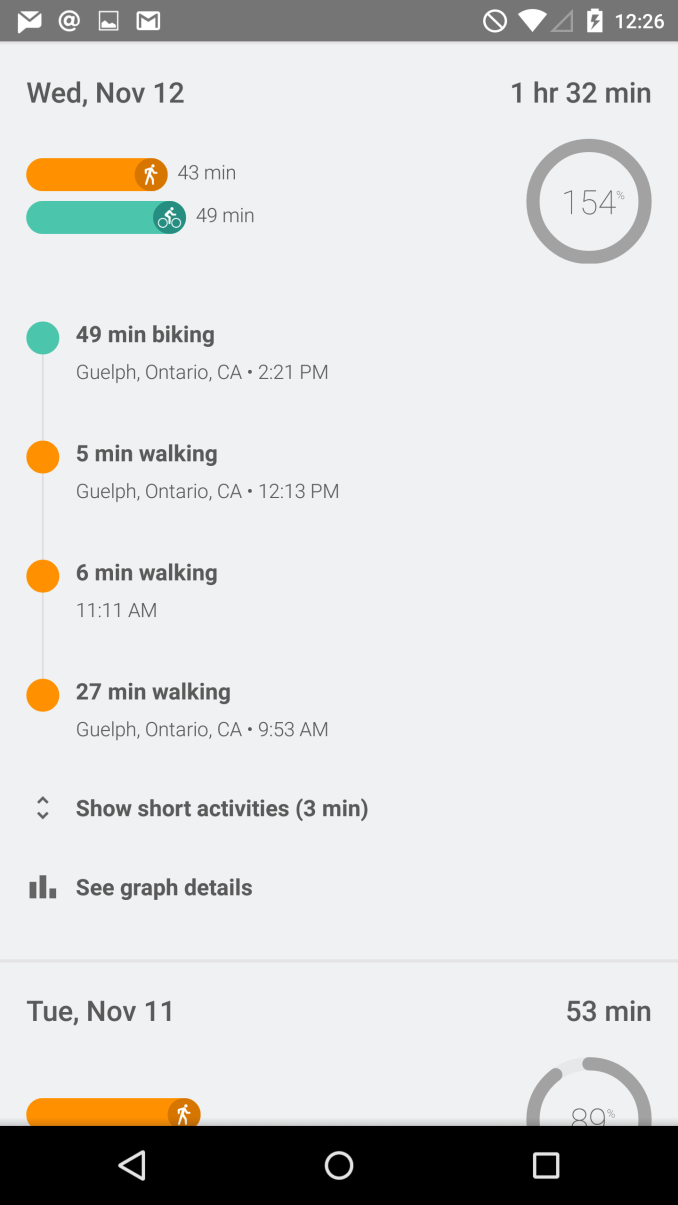
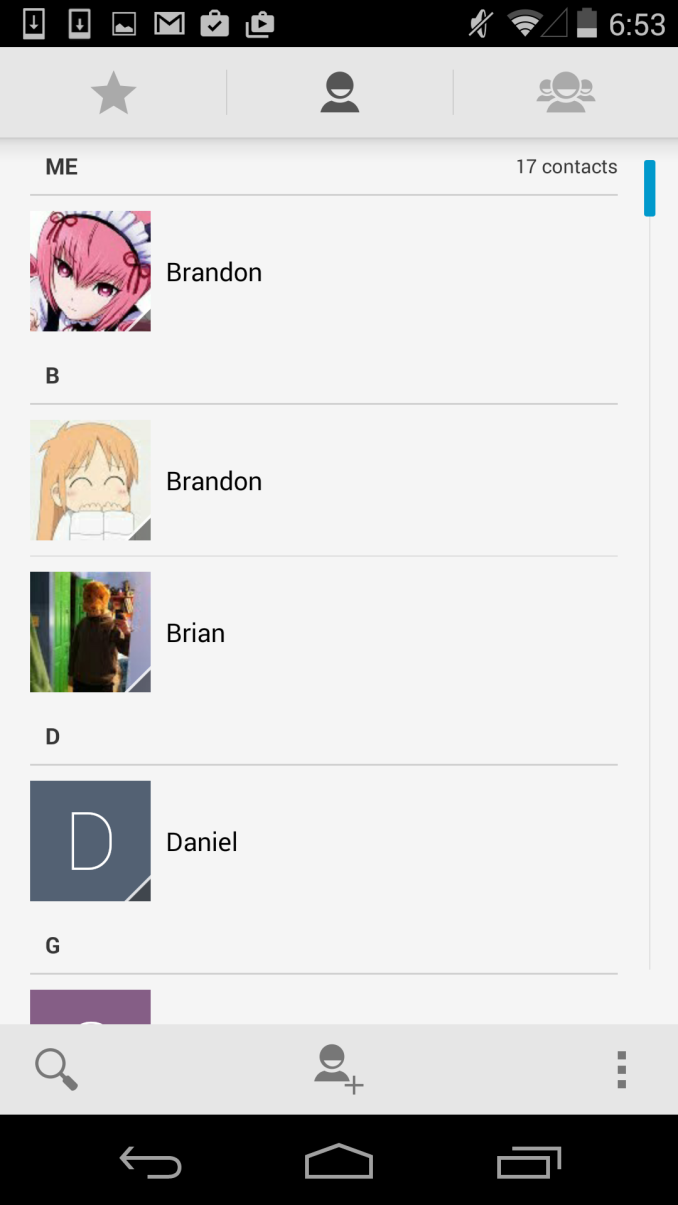
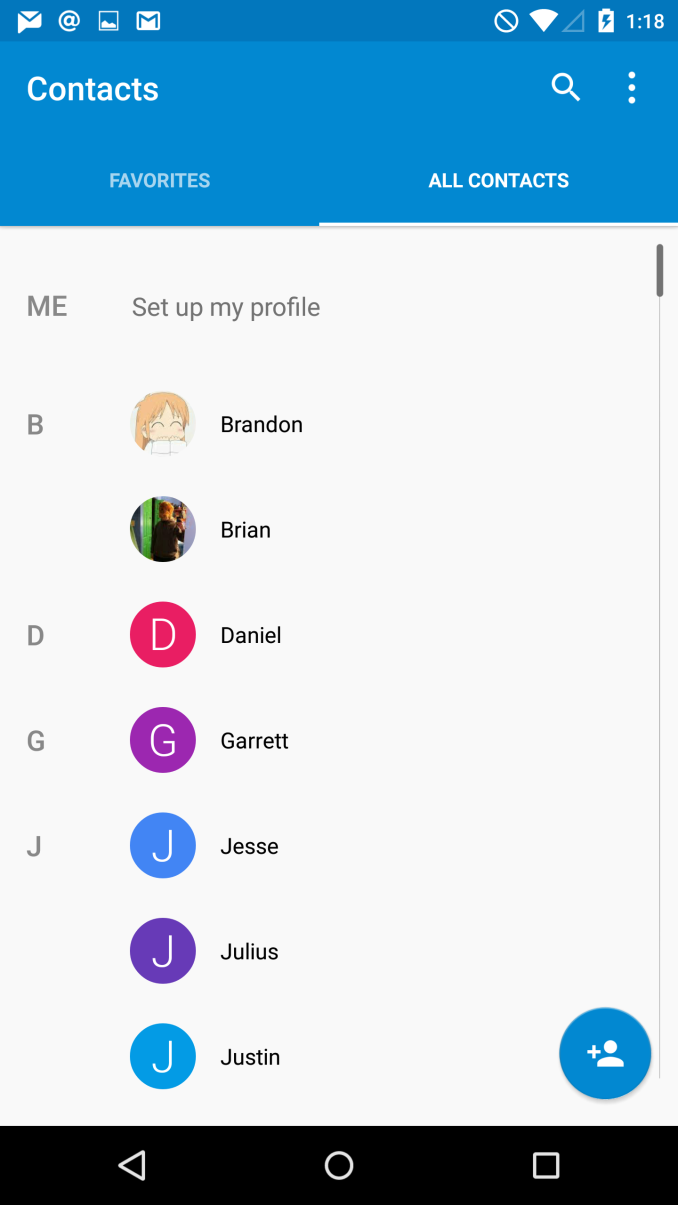
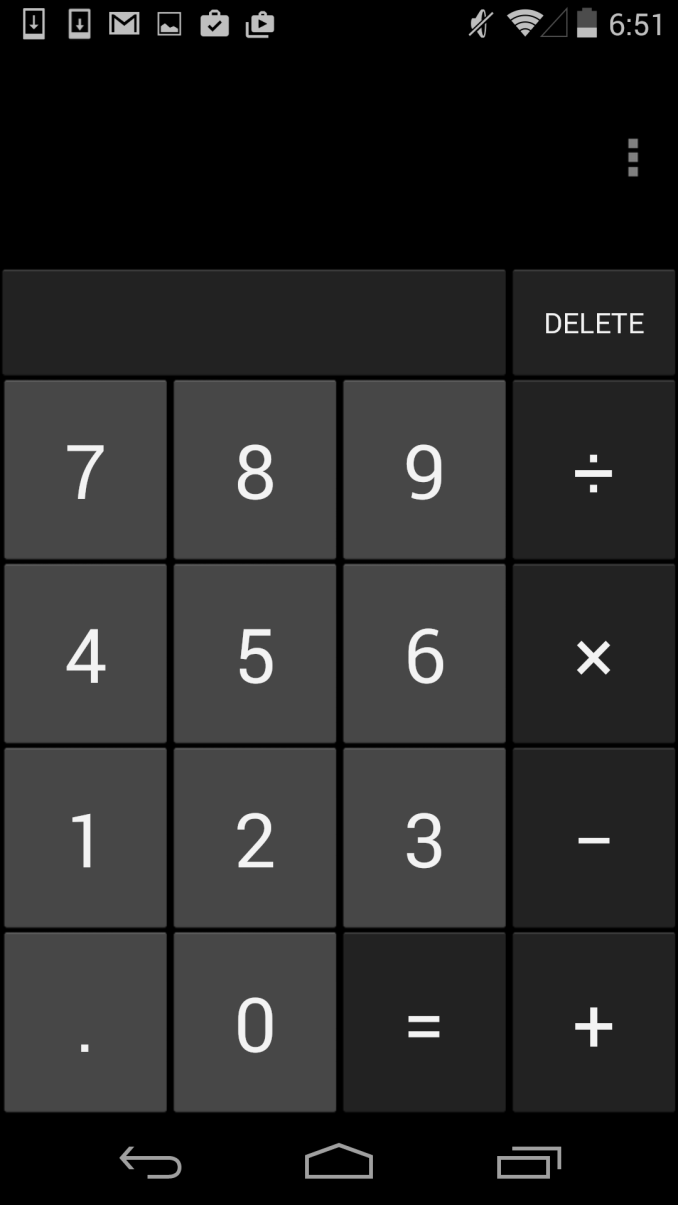
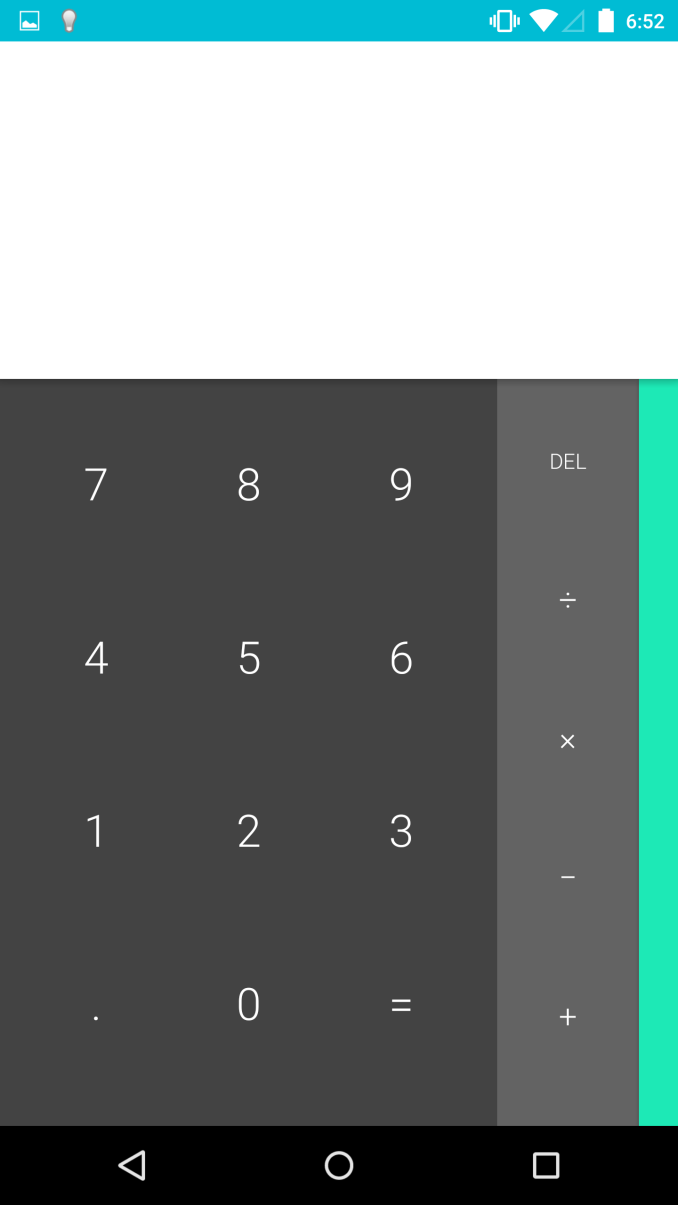
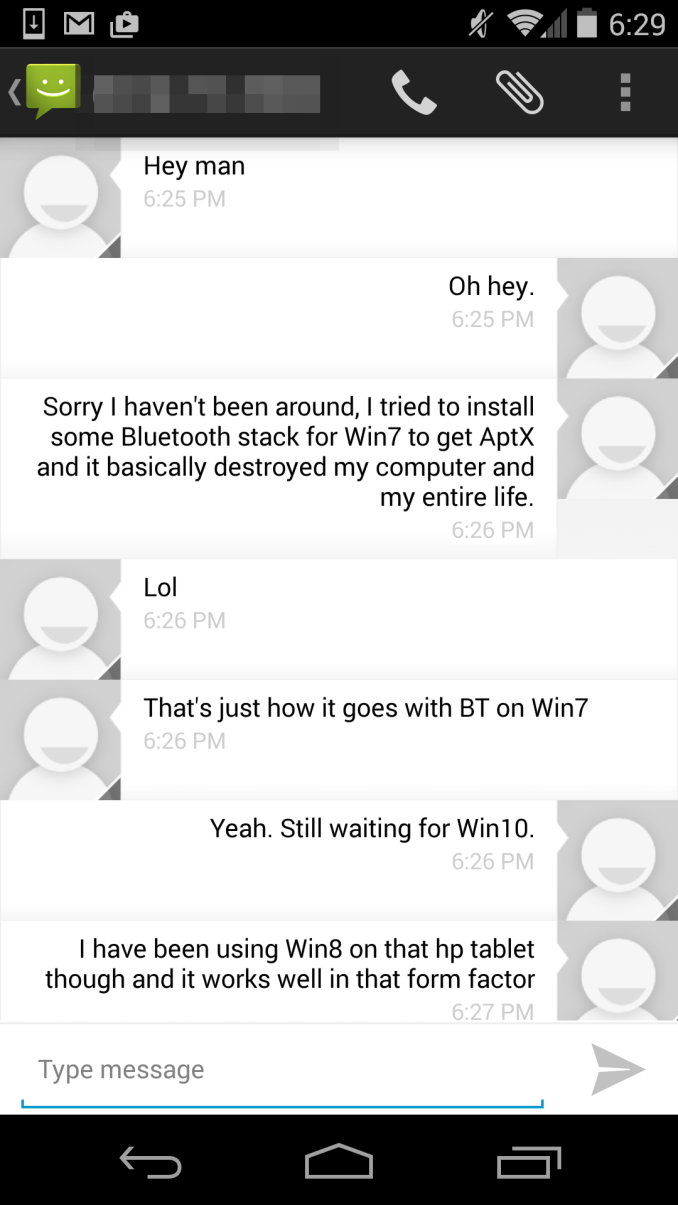
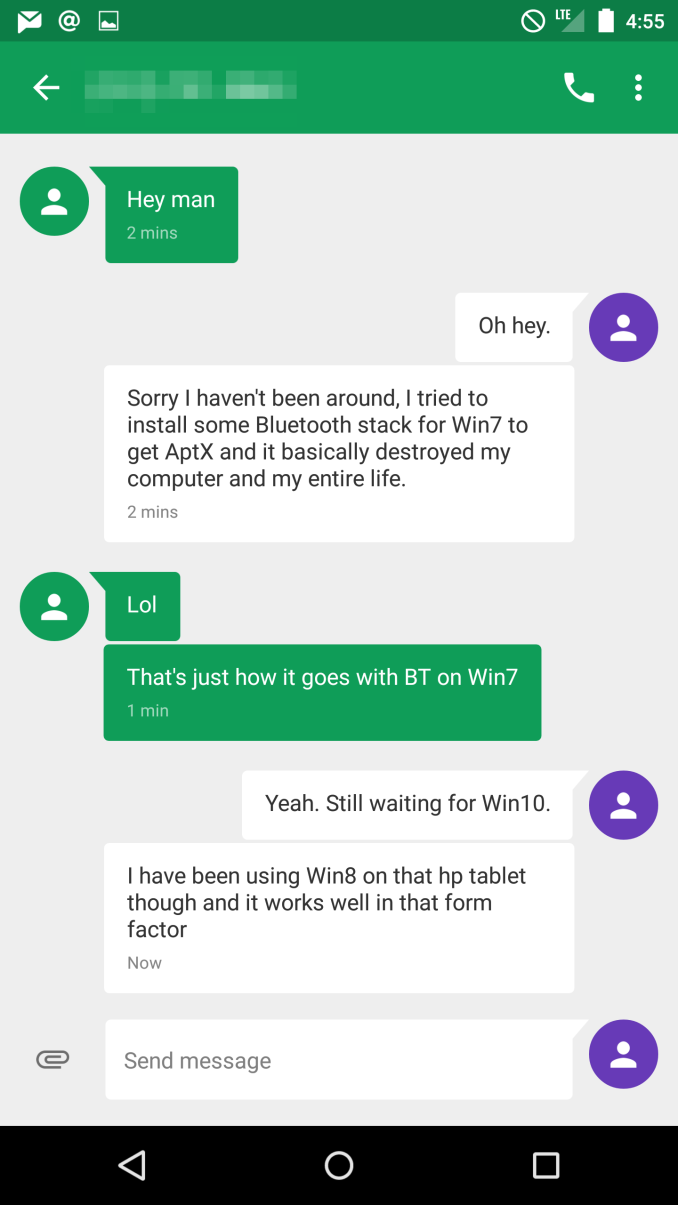









126 Comments
View All Comments
lpyihui - Tuesday, December 2, 2014 - link
How about Project Volta and the battery life on Nexus 5?Brandon Chester - Tuesday, December 2, 2014 - link
I responded earlier in the comments about this. There's really no way to benchmark Volta, it has no impact on anything like web browsing or video playback tests.genghisquan - Tuesday, December 2, 2014 - link
My experience with Lollipop went from positive to negative after the first week. I absolutely loved the concept & execution of Material Design. The other things that I was excited for with 5.0 was how smooth everything would feel and better battery performance. I'm so disappointed with those two things because things feel even more sluggish than it did on KitKat, and battery life isn't noticeably better at all! I seriously have sent more complaints/feedback while using Lollipop than I ever did on KitKat.Impulses - Tuesday, December 2, 2014 - link
Thank the Google Gods there's a setting in Chrome to disable it's tabs from invading the multi tasker, or I probably would've had to switch browsers.jabber - Tuesday, December 2, 2014 - link
I was really looking forward to just ONE thing from Lollipop for my Nexus 4 and that was the potential to use RAW capability for the camera.Unfortunately, Google decided not to update the Nexus 4 camera API. Thanks Google.
zodiacfml - Tuesday, December 2, 2014 - link
1. I don't feel the new Android much since I'm using a different launcher just to remove Google's search bar on the main screen.2. I like the flashlight capability, goodbye flashlight app. It still has a bug though. When it sleeps, it just stops working and the camera app will crash.
3. I appreciate the Auto rotate shortcut missing from the the previous.
4. Battery life seems the same. I have been using the excellent Greenify App. Yet, there should be a way to control power draining issue when the phone has little or no cellular signal.
5. ART has probably remove very small stutters in some apps. Overall, my N5 is very smooth and quick and nothing left to ask for.
6. Google camera HDR has become slower and faster depending on the scene. It's still the best way to get good photos from a smartphone. I hope for manual controls, RAW mode, and other powerful features such as 60 fps video capture on 720p.
7. Now the UI and most messaging/social apps use white background, there should definitely a content aware Auto Brightness control so that it lowers the backlight for such content and then boosts again for full screen photos or videos.
8. A very small and niche annoyance for is the missing IP Address from the WiFi information page. In 5.0, I can only find it in About Phone - Status. I currently use my phone to troubleshoot WiFi connectivity at work and implementation of 5GHz AP setup.
9. I don't like the Photo app. It still feels the Backup Photo App. I have to download a 3rd party app for viewing pictures since they have removed the Gallery app.
10. There should be an option to bring out the keyboard immediately when unlocking the phone. In 5.0, it will require to swipe the lock icon first which is probably useful if you to want to read your notifications first before deciding to unlock the phone.
darkich - Tuesday, December 2, 2014 - link
What a disappointing review.Pointless talk about frame rates and not a word about aspects that actually have practical merit and value - comparative battery endurance and application loading times.
Sigh
Alexey291 - Thursday, December 4, 2014 - link
I know its like I'm on engadget or something...IKeelU - Tuesday, December 2, 2014 - link
As an N4 user who's been using the Google Now launcher since it was available as a standalone APK last year (for those who haven't tried it, you can get it from the google play store now and it's terrific), I didn't feel as "shocked" by lollipop as I did by kitkat. Like with all android updates, it feels like the google apps were gradually updated prior to the OS update so I was already sort of used to the design changes.If your apps were fully updated, and you've been using Google Now Launcher, in day-to-day use there's really just 3 main changes: notification bar, homescreen, general smoothness. All good changes IMO.
oturn - Tuesday, December 2, 2014 - link
"I think what can be said is that overall, Android is pretty much at the same level as Windows Phone and iOS for animation smoothness and general performance."Crazy talk! I have a 2nd gen Moto X with Lollipop, and an iPhone 6. I switch between them weekly. The smoothness and general performance of the iPhone 6 / iOS is ALWAYS a breath of fresh air compared to Android, Lollipop included. I hate it, because I prefer Android, but there it is. It slaps me in the face every time. There's nothing subjective it. It's obvious.